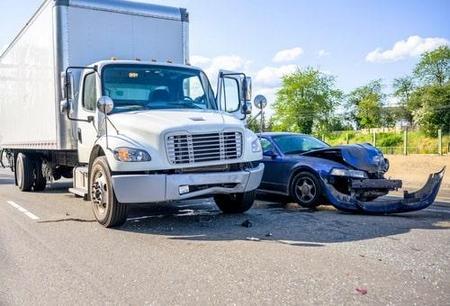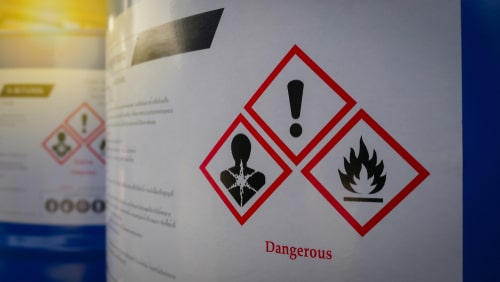Request a Free Consultation | No Upfront FeesSe Habla Español
970-225-2190 |
1-800-664-3151
Recent Blog Posts
Recovering Damages After an Accident Caused By a Drunk Driver
 The average driver does not expect to get in a car accident. However, when a driver chooses to get behind the wheel after consuming alcohol, they are making their chances of causing an accident substantially greater. If you or a loved one has been injured due to another person’s impaired driving, a personal injury attorney can assist you in recovering damages and holding the at-fault parties accountable.
The average driver does not expect to get in a car accident. However, when a driver chooses to get behind the wheel after consuming alcohol, they are making their chances of causing an accident substantially greater. If you or a loved one has been injured due to another person’s impaired driving, a personal injury attorney can assist you in recovering damages and holding the at-fault parties accountable.
The Dangers of Drunk Driving
The adverse impact alcohol has on an individual’s ability to drive makes drunk driving incredibly dangerous. Alcohol-related car accidents resulted in 192 Colorado fatalities in 2018 according to the U.S. Department of Transportation. The consumption of alcohol negatively affects a person’s ability to make rational decisions and react quickly, as well as their overall coordination. Drivers who get behind the wheel when intoxicated are also much more likely to speed or even drive on the wrong side of the road.
Can First Responders Get Workers’ Compensation For PTSD?
 Every day, first responders put their lives in danger to help those in need. Because their jobs require them to be near hazardous circumstances, it is possible for first responders to sustain injuries, both physical and mental. If you have suffered physical injuries or developed a harmful psychological condition like post-traumatic stress disorder (PTSD) due to events witnessed while working, you may be entitled to workers’ compensation benefits.
Every day, first responders put their lives in danger to help those in need. Because their jobs require them to be near hazardous circumstances, it is possible for first responders to sustain injuries, both physical and mental. If you have suffered physical injuries or developed a harmful psychological condition like post-traumatic stress disorder (PTSD) due to events witnessed while working, you may be entitled to workers’ compensation benefits.
PTSD And Other Injuries Suffered By First Responders
First responders including firefighters, police officers, and other professionals who provide emergency medical services regularly face dangerous situations while on the job. First responders commonly sustain injuries due to hazards they experience while working including repetitive stress injuries and injuries resulting from exposure to harmful substances, slip and fall accidents, and workplace violence. Other threats frequently faced by first responders include:
Colorado Continues to See Truck Accident Fatalities
 Colliding with a large truck like a semi or 18-wheeler often results in devastating outcomes. Being some of the heaviest vehicles on the road, tractor-trailers can cause very dangerous accidents. Because of this immense threat, truck drivers have a higher level of responsibility behind the wheel. However, Colorado continues to see fatal truck accidents every year, many of which are the result of truck driver negligence. Colorado law provides families the right to pursue a wrongful death claim if their loved one was lost due to the negligence of a truck driver or trucking company.
Colliding with a large truck like a semi or 18-wheeler often results in devastating outcomes. Being some of the heaviest vehicles on the road, tractor-trailers can cause very dangerous accidents. Because of this immense threat, truck drivers have a higher level of responsibility behind the wheel. However, Colorado continues to see fatal truck accidents every year, many of which are the result of truck driver negligence. Colorado law provides families the right to pursue a wrongful death claim if their loved one was lost due to the negligence of a truck driver or trucking company.
Semi-Truck and Pickup Collide in Weld County
One recent crash serves as an example of just how dangerous truck accidents can be. On the morning of Wednesday, July 21, a pickup truck and semi-truck collided. The Colorado State Patrol reported to the scene of the crash, where two women were pronounced dead. The fatalities were the two passengers of the pickup truck who were both wearing seatbelts. It was also reported that the semi-truck driver was conscious and walking after the accident, though it is possible minor injuries were sustained.
Are There Limits on Damages in a Colorado Personal Injury Case?
 When you think of the effects of a serious accident, such as a car crash, physical injuries like broken bones, lacerations, bruises, and head or back trauma may be the first things that come to mind. However, severe accidents can also affect the lives of injury victims in other, less tangible ways. As such, victims are often eligible to recover non-economic damages in addition to compensation for their medical expenses when they pursue a personal injury claim. Appropriate dollar values for non-economic damages can be difficult to determine, and they can also be limited by statutory caps under Colorado law.
When you think of the effects of a serious accident, such as a car crash, physical injuries like broken bones, lacerations, bruises, and head or back trauma may be the first things that come to mind. However, severe accidents can also affect the lives of injury victims in other, less tangible ways. As such, victims are often eligible to recover non-economic damages in addition to compensation for their medical expenses when they pursue a personal injury claim. Appropriate dollar values for non-economic damages can be difficult to determine, and they can also be limited by statutory caps under Colorado law.
What Are Non-Economic Damages?
Non-economic damages compensate for things like the victim’s pain and suffering, stress and anxiety, loss of companionship, and emotional distress. Determining a monetary award for these types of injuries can be very challenging for all parties involved. While the injuries may certainly be very serious, there are many factors that jurors will likely consider when trying to determine adequate compensation for the victim, some of which include:
How Can Injured Pedestrians Recover Damages in Colorado?
 When people think of car accidents, they likely think of car-on-car collisions. However, accidents involving pedestrians can also cause severe damages and possible fatalities. According to AAA Colorado, since 2009, the number of pedestrians killed on a yearly basis in Colorado has nearly doubled.
When people think of car accidents, they likely think of car-on-car collisions. However, accidents involving pedestrians can also cause severe damages and possible fatalities. According to AAA Colorado, since 2009, the number of pedestrians killed on a yearly basis in Colorado has nearly doubled.
Urban areas have seen the highest increase in pedestrian fatalities, which occur most often on sidewalks, the side of the road, and crosswalks. Some of the most common causes for pedestrian accidents include a driver’s failure to yield to a pedestrian in a crosswalk, to come to a complete stop at a stop sign, or to maintain control of their vehicle. Drunk driving is also a common contributing factor. Colorado has made an effort to combat these tragic accidents, strengthening its state laws and penalties.
Dangerous Chemical Exposures Faced by Colorado Oil and Gas Industry Workers
 Two workers were killed and another 42 injured in a work accident after a chemical leak at a plant in La Porte, Texas, earlier this week. According to information released by the company, LyondellBasell, approximately 100,000 pounds of a chemical mixture that included acetic acid was released in the leak. Other chemicals released included hydrogen iodide, methyl acetate, and methyl iodide.
Two workers were killed and another 42 injured in a work accident after a chemical leak at a plant in La Porte, Texas, earlier this week. According to information released by the company, LyondellBasell, approximately 100,000 pounds of a chemical mixture that included acetic acid was released in the leak. Other chemicals released included hydrogen iodide, methyl acetate, and methyl iodide.
Plant officials say 30 of the workers injured were hospitalized, some with critical injuries. One victim suffered burns, while the 29 others suffered respiratory issues.
What Is Acetic Acid?
Acetic acid is an organic, flammable liquid that can cause serious eye damage and severe skin burns to exposed victims. The acid also produces a hazardous vapor and is very corrosive to metals and tissues. Acetic acid is used to make other chemicals. It is also used as a food additive in extremely diluted amounts.
Who Is Liable in Hotel Drowning Accidents?
 Colorado Springs police issued a report of a child who was taken to the hospital after a near-drowning incident on July 15 at the Hotel Elegante. Police have not released any other information, including the child’s age or current condition, but the incident is perhaps notable in light of a drowning that occurred at the same hotel several years ago. In that case, the family of the child who drowned later filed a wrongful death lawsuit against the hotel, as well as several other parties. These cases raise the question of who may be liable for drowning accidents.
Colorado Springs police issued a report of a child who was taken to the hospital after a near-drowning incident on July 15 at the Hotel Elegante. Police have not released any other information, including the child’s age or current condition, but the incident is perhaps notable in light of a drowning that occurred at the same hotel several years ago. In that case, the family of the child who drowned later filed a wrongful death lawsuit against the hotel, as well as several other parties. These cases raise the question of who may be liable for drowning accidents.
Allegations of Negligence
After the previous drowning incident, which happened in December 2017, the victim’s family alleged that the hotel was liable due to a failure to provide adequate warning of a steep drop-off between the shallow end and the deep end of the pool, as well as a failure to enforce a rule requiring children entering the pool area to have adult supervision. The family also sought damages from the grandmother of the victim’s friend, who the family alleged was responsible for the victim’s supervision at the time.
Colorado Makes Significant Changes to the Workers’ Compensation Act
 When a worker is injured in the course of their job or develops a medical condition or illness that is work-related, Colorado law says they are entitled to receive workers’ compensation benefits through their employer. Depending on the severity of the injuries, workers’ comp can provide a variety of different benefits. Recent changes to the Colorado Workers’ Compensation Act will affect how those benefits are administered in the coming months and years.
When a worker is injured in the course of their job or develops a medical condition or illness that is work-related, Colorado law says they are entitled to receive workers’ compensation benefits through their employer. Depending on the severity of the injuries, workers’ comp can provide a variety of different benefits. Recent changes to the Colorado Workers’ Compensation Act will affect how those benefits are administered in the coming months and years.
Workers’ Compensation Benefits in Colorado
Under the Colorado Workers' Compensation Act, if an employer has three or more employees, they are required to carry workers’ compensation insurance. When an employee is injured on the job, they must report the injury to their employer in writing within four days of the injury in order to qualify for those benefits.
11-Year-Old Boy Killed on Water Ride at Amusement Park
 A tragic accident in Iowa has made national news and serves as an important reminder of how vulnerable children are to accidental injury and death at amusement parks, playgrounds, and other recreational locations.
A tragic accident in Iowa has made national news and serves as an important reminder of how vulnerable children are to accidental injury and death at amusement parks, playgrounds, and other recreational locations.
The accident occurred over the Fourth of July holiday weekend at the Raging River ride at Adventureland Park in Altoona, Iowa. The water ride pushes rafts through “faux river rapids” using a conveyor belt. The 11-year-old victim and five other people were on the ride when the raft they were in flipped over. One other child was listed in critical condition and two others suffered minor injuries.
History of Accidents
The ride had just opened for the first time for the summer season the day before the fatal accident following an inspection and approval by the Iowa Division of Labor. The ride has been a popular attraction at the park for almost 40 years; however, this is the second fatal accident in just five years. In 2016, a 68-year-old employee was killed when he fell because the ride suddenly started moving as he was helping riders on and off the rafts. The family of the employee who was killed on the ride later settled a wrongful death lawsuit with the park.
The NTSB’s 2021-2022 Most Wanted List – Part II
 In last week’s blog post, we began discussing the recommendations made by the National Transportation Safety Board (NTSB) in its 2021-2022 Most Wanted List (MWL). The annual list focuses on safety issues and what steps should be taken in all areas of national transportation. Our prior post discussed the agency’s recommendations for drunk and drugged driving crashes and protecting vulnerable road users. In this week’s post, we will continue our discussion with the agency’s recommendations for distracted driving accidents, speed-related accidents, and crash-avoidance technology.
In last week’s blog post, we began discussing the recommendations made by the National Transportation Safety Board (NTSB) in its 2021-2022 Most Wanted List (MWL). The annual list focuses on safety issues and what steps should be taken in all areas of national transportation. Our prior post discussed the agency’s recommendations for drunk and drugged driving crashes and protecting vulnerable road users. In this week’s post, we will continue our discussion with the agency’s recommendations for distracted driving accidents, speed-related accidents, and crash-avoidance technology.
Eliminate Distracted Driving
Each year, there are about 400,000 victims injured in vehicle accidents caused by distracted drivers, and distracted drivers kill more than 3,000 victims. Smartphones and tablets are one of the main causes of distracted driving incidents. It is no wonder these numbers are so high, given that there are almost 300 million smartphone users in the United States.

970-225-2190 | 1-800-664-3151
1403 W. 29th St.,
Loveland, Colorado 80538
Greeley:
3835 W. 10th Street, Unit 100,
Greeley, Colorado 80634|
970-460-2220
Longmont:
353 Main Street, Suite A,
Longmont, Colorado 80501|
720-575-0509
Boulder:
4450 Arapahoe Avenue, Suite 100,
Boulder, Colorado 80303|
303-997-2018
Ft. Collins:
1109 Oak Park Dr Ste 100,
Fort Collins, CO 80525|
970-225-2190
Cheyenne:
109 E. 17th St., Suite #6148,
Cheyenne, WY 82001|
307-227-4051 (By Appointment Only)















